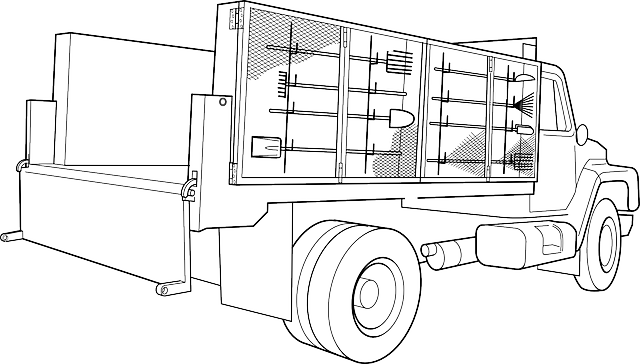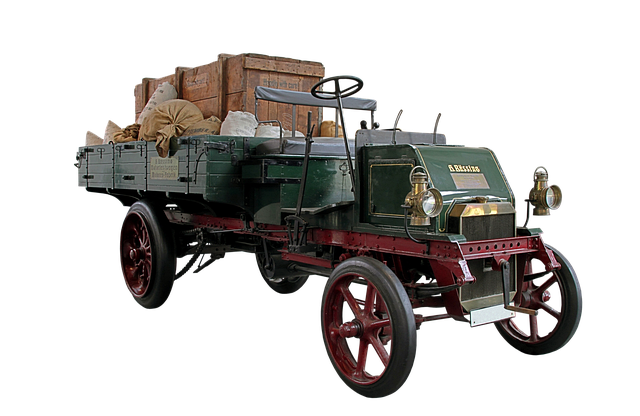Looking to register your car in California? This comprehensive guide walks you through every step, from understanding eligibility requirements to navigating the DMV process for both inspection and title transfer. We’ll equip you with the necessary documents for a smooth DMV vin verification, plus post-registration tasks like insurance, tags, and annual renewals. By following these steps, you’ll efficiently get your vehicle registered in the Golden State.
- Understand Eligibility Requirements for Car Registration in California
- Gather Necessary Documents for DMV Vin Verification
- Prepare Your Vehicle for Inspection and Registration
- Navigate the DMV Process for Car Registration and Title Transfer
- Post-Registration Steps: Insurance, Tags, and Annual Renewals
Understand Eligibility Requirements for Car Registration in California

Before you begin the registration process, it’s crucial to understand if your vehicle meets California’s eligibility requirements. To register a car in California, your vehicle must be legally imported and meet all state and federal safety standards. The Department of Motor Vehicles (DMV) conducts a thorough vin verification process, checking the vehicle identification number (VIN) against their records to ensure it matches the specified year, make, and model.
Additionally, the DMV inspects the car’s overall condition to guarantee it complies with emission standards and doesn’t have any outstanding safety recalls. If you’re using a mobile vin verifier or scheduling a vin inspection, ensure the service provider is reputable and authorized by the DMV to expedite this crucial step in the registration process.
Gather Necessary Documents for DMV Vin Verification

Before heading to the California DMV for registration, it’s crucial to gather all the necessary documents required for a successful dmv vin verification. This process is designed to ensure that your vehicle’s identification number (VIN) is accurate and matches the make, model, and year of your car. For this verification, you’ll need key documents like the title or registration certificate from your previous state (if applicable), proof of insurance, a valid driver’s license, and perhaps most importantly, your vehicle’s mobile vin verifier or mobile vin inspection report. Some states allow you to obtain this digitally, while others may require a printed copy.
Ensure these documents are up-to-date and accurate to streamline the registration process. Having them readily available will save you time and potential frustration at the DMV. Remember that dmv vin verification is a critical step in ensuring your vehicle’s history is accurately documented, so prioritize collecting everything needed before your visit.
Prepare Your Vehicle for Inspection and Registration

Before you can register your car in California, it’s crucial to ensure your vehicle meets all safety and emissions standards. Prepare your car for the process by conducting a thorough inspection. This includes checking key components like lights, brakes, tires, and exhaust systems. Make sure everything is in good working order; repairs or replacements may be needed if not. The DMV emphasizes this step as part of their vin verification process, which includes inspecting the vehicle’s unique identifier (VIN).
Consider using a mobile vin verifier to streamline the initial inspection. This service allows you to verify your car’s condition before visiting the DMV, saving time and effort. A mobile vin inspection ensures that any issues are identified early on, making the registration process smoother. Remember, a well-prepared vehicle increases the chances of a successful and swift registration at the California DMV.
Navigate the DMV Process for Car Registration and Title Transfer

Navigating the DMV process for car registration and title transfer can seem daunting, but with the right preparation, it can be a smooth experience. The first step involves gathering all necessary documents, including proof of insurance, your current vehicle registration (if applicable), and identification. You’ll also need to undergo a DVW (Department of Motor Vehicles) vin verification, which ensures that your car’s unique Vehicle Identification Number (VIN) matches the details in the DMV system. This crucial process helps prevent fraud and ensures compliance with California’s regulations.
A common concern is the timing and convenience of this step. Fortunately, many residents opt for a mobile vin inspection or utilize services offering remote vin verification to simplify matters. These methods allow you to complete the vin check from the comfort of your home or on-the-go, further streamlining the registration process. By ensuring your VIN is accurate and up-to-date, you’re one step closer to securing your vehicle’s legal status in California.
Post-Registration Steps: Insurance, Tags, and Annual Renewals

After successfully registering your vehicle with the California DMV, there are a few key steps to complete before hitting the road. One of the most crucial is securing insurance coverage for your new car. In California, all vehicles must have valid liability insurance, and proof of this is typically required during registration. You can choose from various types of auto insurance plans tailored to your needs and budget.
Additionally, you’ll need to obtain vehicle tags (license plates) from the DMV. These tags are not only for identification but also serve as a visual reminder that your car has passed all necessary inspections and is road-worthy. They must be displayed on the rear of your vehicle at all times. Lastly, remember that vehicles in California require annual renewals, which include updating registration fees and ensuring your information remains current. A mobile vin verifier or inspector can assist with the initial verification process by checking the car’s history and VIN (Vehicle Identification Number) before you begin the registration journey.
Registering a car in California involves several steps, from understanding eligibility requirements to navigating the DMV process. By gathering necessary documents for DVV (DMV VIN verification), preparing your vehicle, and completing the registration and title transfer, you’ll be on your way to legal and safe driving. Remember to follow post-registration steps like insuring your vehicle, obtaining license plates, and ensuring annual renewals to maintain compliance with California’s motor vehicle laws.
